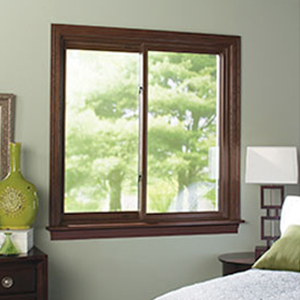Condensation is a sure sign that your windows have to be replaced.
Windows are a vital obstacle between the severe, variable weather outside as well as our tranquility, constant house temperatures. Home replacement windows quite often have a fifteen to twenty-year life-span, so the good news is we do not have to think about changing them too often. But recognizing when it's time to replace them can be complicated. You could be tempted to try and hold out for another season if you recognize the warning signs. But replacing your home windows now could assist you extend the life of your entire house and maintain you and your family members warm all winter long. Below are a few signs that your home windows are not ready for the rough winter season this year.
Drafty Home
As windows age, they begin diminishing, damaging, and also not shutting appropriately, allowing air from inside your house to drain. As a result of this, your HVAC system has a hard time to keep your house at a consistent temperature and also sends your energy expenses increasing. If your home is visibly more breezy or your electrical bills seem to be rising this fall for no evident factor, you may wish to have your home windows checked out.
Tough to Lock
We enjoy having our windows open when the weather condition behaves, yet they shouldn't be open all the moment. During the wintertime when we're away, your windows ought to be shut in location as well as secured. Windows with malfunctioning locks is a significant security risk that ought to be corrected asap to maintain your family safe. Typically the lock can be fixed cheaply, however if the home window is having problem remaining open or closed or is leaking air, it could be best to merely mount a brand-new one.
Condensation Forming
The largest indicator that you require brand-new home windows is when condensation begins to base on the inside of your window when it is shut and locked. This is indicative of a most likely irreparable flaw and also needs to be addressed asap to stop the possible development of mold in the frame, which could infect other areas of your home and also create severe damage when left untreated.
Have you just about had it with your old, breezy windows?
Is this the year you've chosen to finally change your windows? Replacing your home windows with new ones comes with great deals of advantages, including a power effectiveness boost, far better air flow, and far better high quality of light in your home. The National Window Rating Council licenses as well as labels home windows (as well as doors and also skylights) on their performance and also energy efficiency. When you're purchasing new home windows you'll see these ratings on the NFRC www.bureshhomesolutions.com tag. In this week's blog, we'll discuss how to read this tag to make sure you're making an educated decision on your brand-new windows.
Warm Gain and Loss
The very first 3 buildings on the label concern exactly how the home window performs when it come to warmth gain and loss. Windows gain and also lose heat in 3 ways:
Straight transmission through the glass.
Radiation of warm from the sunlight right into the house, as well as away from the house from objects in your home.
Air leak via and around the window.
U-factor
This is "The rate at which a home window, door, or skylight performs non-solar warm flow." The takeaway right here is "The lower the U-factor, the a lot more energy-efficient the home window, door, or skylight."

Solar Heat Gain Coefficient
The SHGC tells us how much radiation is confessed via the home window and also launched as warm in the house. The lower the number, the much less warm is transferred. Nevertheless, this doesn't necessarily mean you desire a reduced SHGC. For instance, since a higher SGHC implies the window permits extra warmth in, you can allow more solar warmth inside in the winter months, which might decrease your heating needs. In this situation, the climate you stay in will certainly play a significant factor in choosing an SHGC ranking.
Air Leak
This measures how much air the home window allows about a particular pressure distinction across it. The reduced the rating, the much less air leakage.
Sunshine Transmittance
The following two rankings determine how much light a home window lets right into your home.
Noticeable Transmittance (VT).
This number between 0 and also 1 procedures what portion of the spectrum of noticeable light the window lets through. The higher the portion, the more light the window will certainly allow. If you wish to use daylighting in your home, you'll want a higher portion. If you want to decrease indoor glow, you could want a reduced portion.
Light-to-Solar Gain.
This number is the ratio between the SHGC and also the VT. "The higher the number, the extra light transmitted without including too much amounts of warmth.".